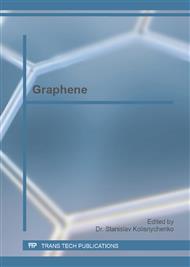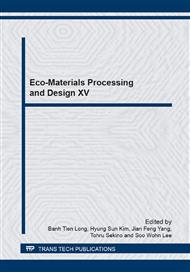p.23
p.27
p.31
p.35
p.39
p.43
p.47
p.51
p.55
Graphene Oxide Based Selective VOCs Sensor for Indoor Air Quality Monitoring
Abstract:
We suggest new approach to monitor indoor air quality by using selective VOCs sensor specialized to detect formaldehyde, benzene, toluene with distinct sensitivity. One of the major drawbacks in semiconductor type gas sensors is poor selectivity despite of high sensitivity in detection of trace level of gases. Graphene oxide was deposited as a sensing layer on silicon dioxide sensor with platinum bottom electrodes. Thermal treatments under varying temperature, time, and gas, were performed to reduce graphene oxide at a certain amount as desired. Depending on the degree of reduced graphene oxide, obvious difference in functional groups in terms of type and number was observed. Following sensing behavior measurements confirmed that partial reduction of graphene oxide determined the selective gas adsorption to influence the sensing behavior to improve the selective VOCs detection for better indoor air quality.
Info:
Periodical:
Pages:
39-42
Citation:
Online since:
October 2014
Authors:
Price:
Сopyright:
© 2015 Trans Tech Publications Ltd. All Rights Reserved
Share:
Citation:



